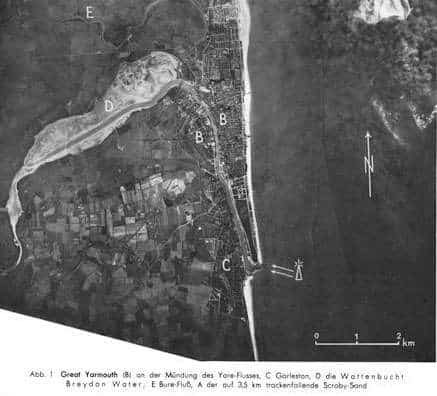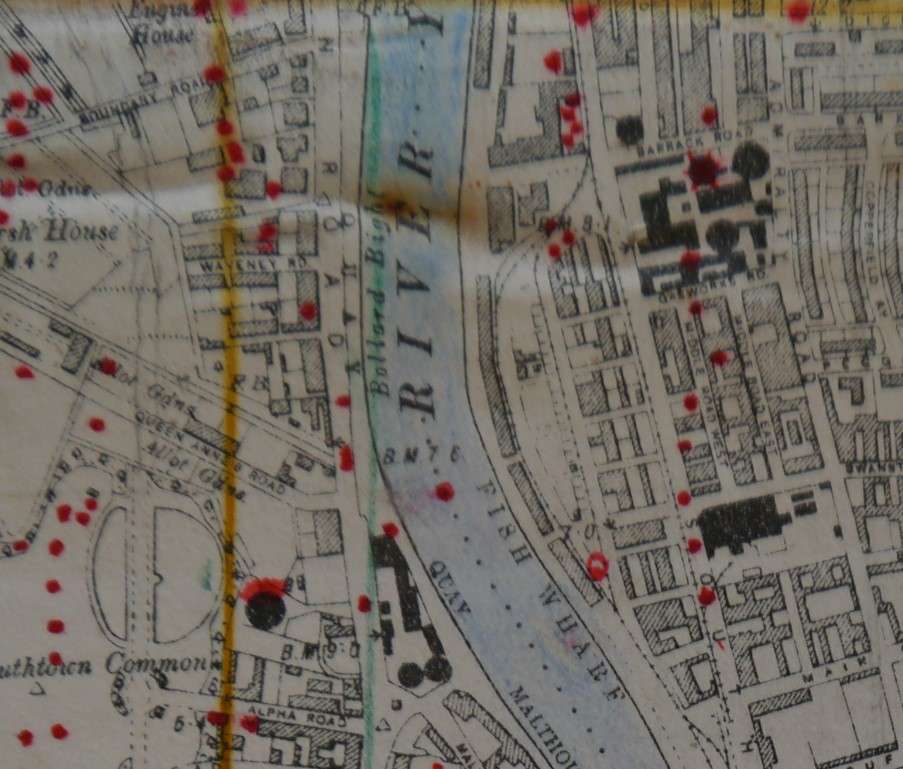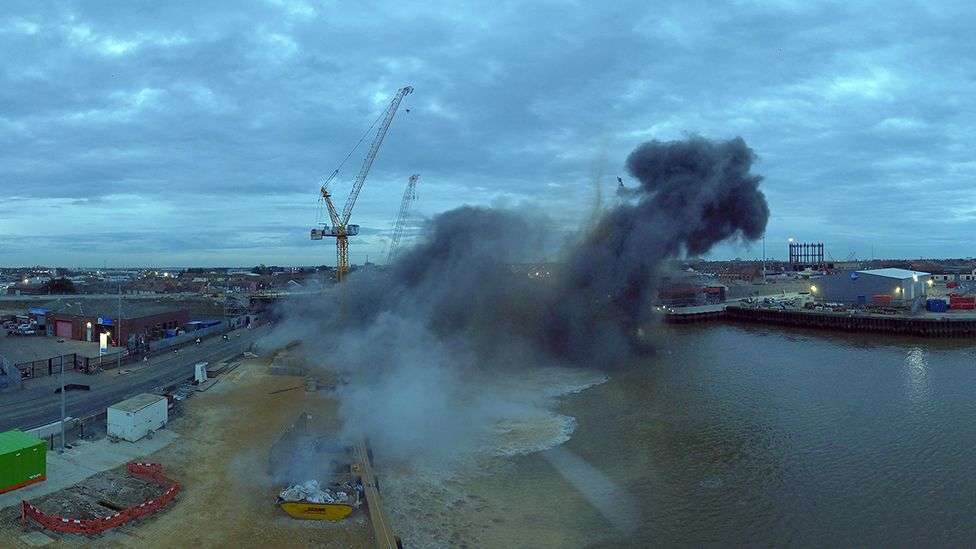On 7th February, an unexploded 250kg WWII-era bomb was discovered by a contractor undertaking dredging work in Great Yarmouth on the River Yare – as part of a development to build a third river crossing.
A 400m exclusion zone was put in place as an army bomb disposal team took control of the incident and assessed the device.
Engineers completed a sand barrier around the bomb for its planned detonation before moving on to the next phase the disposal operation, which involved utilising a robot to cut open and dismantle the fuse in the device.
On the evening of Friday 10th February, the device detonated – reportedly unexpectedly – as Army specialists attempted to disarm the bomb. Norfolk Police have confirmed that all Army and emergency services personnel have been accounted for.
Members of the public reported a huge bang and felt buildings shake when the bomb exploded, and the reverberations were felt up to 15 miles away.
Video source: BBC News.
History of bombing activity in Great Yarmouth
The County Borough of Great Yarmouth sustained a very high density of bombing during WWII, there was a total of 938 bombs recorded – equating to 260.7 items of ordnance per 1,000 acres1.
This was mainly due to Great Yarmouth’s position along the east coast of Britain, in close proximity to German bases situated in mainland Europe.
As with WWI, East Anglia proved an easy target for German bombing raids due to its close proximity. Great Yarmouth is located along a Luftwaffe flight path and its residential areas were likely attacked during opportunistic ‘tip and run’ raids to inhibit British morale.
The Luftwaffe were also well aware of the docks and industry of the town which may have attracted further bombing, as referenced in various target and reconnaissance photographs such as the one below.
Another potential bombing target in the town was the Royal Naval Hospital which is located only a few hundred metres from the River Yare.
The hospital was temporarily used as an information centre and administrative quarters by the Royal Navy during WWII, known as HMS Watchful, and included an artillery plotting room for coastal defence.
Its distinctive shape from the air and strategic importance would most likely have been well known to the Luftwaffe.
Image showing an aerial shot of Great Yarmouth, UK.
Few areas of the town were left unaffected by bombing, this extract of a WWII bomb map for Great Yarmouth (see below) shows strikes all along the River Yare.
1st Line Defence believe that the recent 250kg unexploded bomb was discovered from this stretch of the River Yare.
Image showing a map and bomb records of the River Yare in Great Yarmouth.
It is not uncommon for unexploded bombs (UXBs) to be encountered in British rivers during dredging or construction works – such as this example of a 50kg WWII UXB found in the River Thames by the Houses of Parliament in January 2017.
This is mainly because unexploded bombs falling within rivers or other areas of open water were at a more significant risk of going unnoticed and unreported compared to those that fell on land.
How can 1st Line Defence help?
We would always recommend that for any construction or development activity, be it on land or water in the UK, that the risk of encountering UXO should be considered before any intrusive ground works commence.
The first stage of the UXO Risk Mitigation Strategy we follow is a UXO Risk Assessment, which a historical desktop study which makes an assessment of the level of risk – and provides recommendations of risk mitigation measures should they be required.
1st Line Defence can provide everything from Preliminary and Detailed UXO Risk Assessments through to UXO Survey, UXO Clearance or Disposal, on land or marine / offshore projects.
If you would like more information or some general advice about UXO risk, contact one of our Sales Team on + 44 (0) 1992 245020 or email info@1stlinedefence.co.uk.
Image source: Sky Revolutions.
Sources
1Home Office Bombing Statistics














